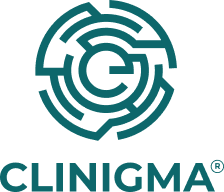Understanding the value of patient interviews in early drug development: Enhancing clinical trial success

Patient interviews are a cornerstone of patient-centric approaches in clinical trials, especially during early development. These interviews offer invaluable insights into patients’ lived experiences, shedding light on unmet needs, treatment priorities, and potential barriers to participation. By incorporating this feedback early, sponsors can design trials with endpoints and protocols that not only align with patient priorities but also meet the growing demands of regulatory bodies for patient-focused evidence.
Below, we explore how patient interviews enhance clinical trial design, improve regulatory preparedness, and ultimately lead to more meaningful outcomes both for patients and the drug development process.
The Role of Patient Interviews in Early Development
In early-phase studies, patient interviews provide qualitative data that informs critical decisions, such as endpoint selection and protocol design. By engaging directly with patients, sponsors can identify which outcomes truly matter to them. For example, interviews with patients suffering from chronic conditions may highlight practical daily challenges—such as managing fatigue or mobility—that are overlooked by traditional clinical metrics. This input ensures that later trial phases target outcomes that are not only clinically relevant but also meaningful from the patient’s perspective.
Regulatory bodies like the FDA and EMA emphasize the importance of patient-centric drug development. Patient interviews conducted early on can provide the qualitative evidence needed to justify endpoint selections and trial designs when sponsors engage with these authorities. For instance, showing that a treatment's impact on a specific symptom was prioritized based on patient insights can help secure regulatory buy-in for Phase 3 trial designs. By addressing regulatory expectations in early development, sponsors reduce the risk of costly protocol amendments or trial delays.
Benefits of Patient Interviews
The advantages of incorporating patient interviews in early development are both practical and strategic:
- Informed Endpoint Selection: Patient feedback helps sponsors select endpoints reflective of meaningful changes in patients’ quality of life, increasing the likelihood of producing impactful and relevant results.
- Regulatory Alignment: Early interviews provide evidence to support Phase 3 trial designs, ensuring seamless discussions with regulatory bodies and adherence to evolving patient-focused guidelines.
- Improved Recruitment and Retention: By identifying logistical or procedural barriers during interviews, sponsors can design trials that are more practical and patient-friendly, minimizing participation burdens.
- Streamlined Development Process: Addressing patient needs early reduces the likelihood of mid-trial changes, saving costs and ensuring more efficient execution of later trial phases.
These benefits highlight how proactive patient engagement can guide end-to-end trial strategies to align with patient priorities and regulatory requirements.
Methods of Conducting Patient Interviews
Effective patient interviews require methods that balance structure with flexibility to gather actionable insights while respecting patient comfort.
- Semi-Structured Interviews: A mix of open-ended and focused questions allows researchers to explore patients’ experiences while addressing specific trial objectives, such as symptom burden or treatment expectations.
- Concept Elicitation: Used to identify essential elements of the patient experience, especially for conditions where patient input is scarce, this method helps define the core concepts to be assessed in trials.
- Cognitive Debriefing: Ensures patient-facing materials, such as surveys or PRO measures, are clear and meaningful, reducing the risk of inaccurate data collection in later phases.
Using skilled interviewers and representative patient samples is key to success. Furthermore, qualitative findings should be rigorously analyzed to extract themes and actionable insights, ensuring they directly influence trial designs.
Conclusion
Patient interviews are more than just a source of qualitative feedback—they are a critical component of modern clinical trial development. By uncovering patient priorities, addressing practical barriers, and aligning studies with regulatory demands, interviews enhance the relevance, efficiency, and success of trials. Sponsors who integrate the patient voice early in the process are better positioned to design impactful studies that resonate with both patients and regulators.





